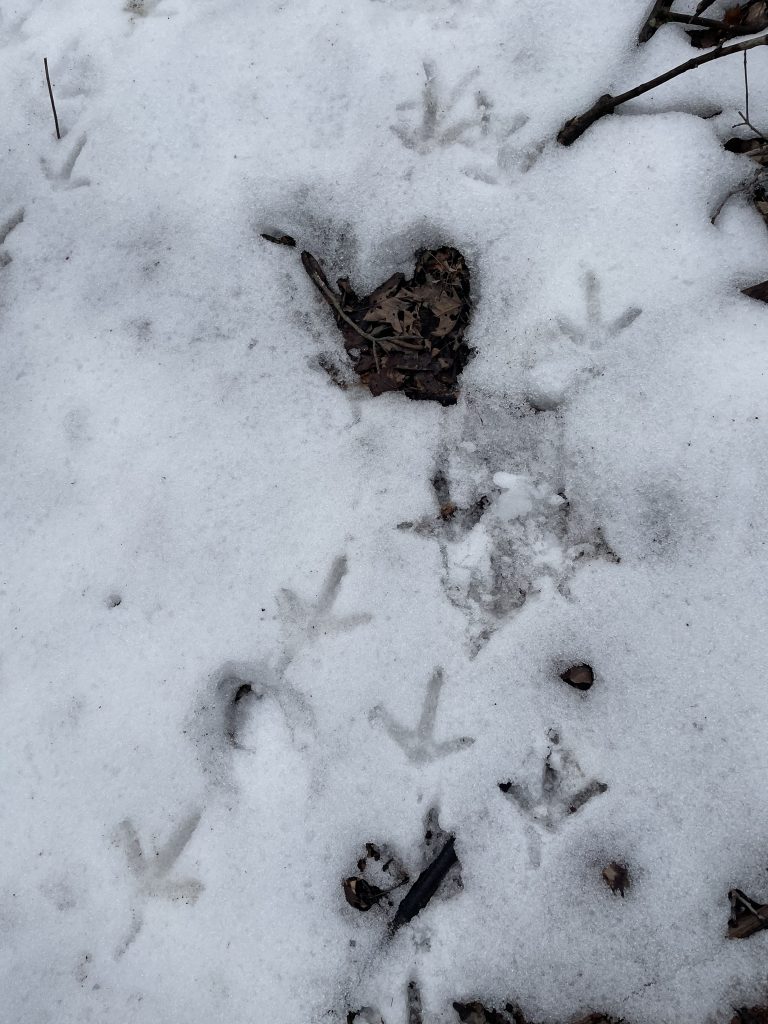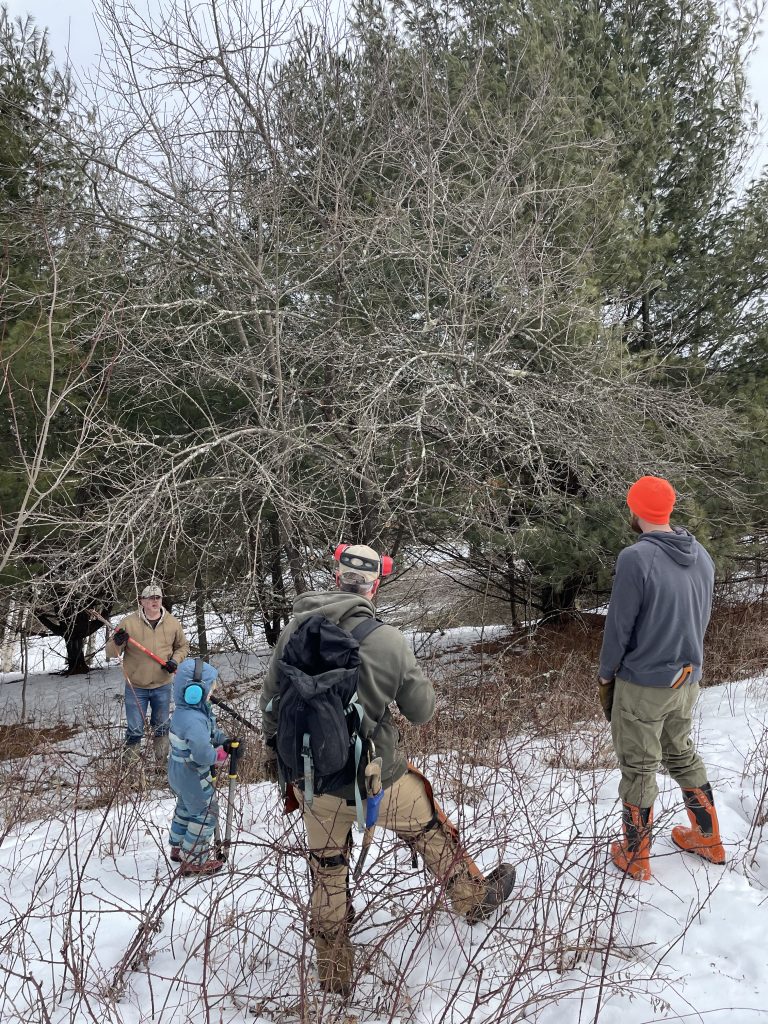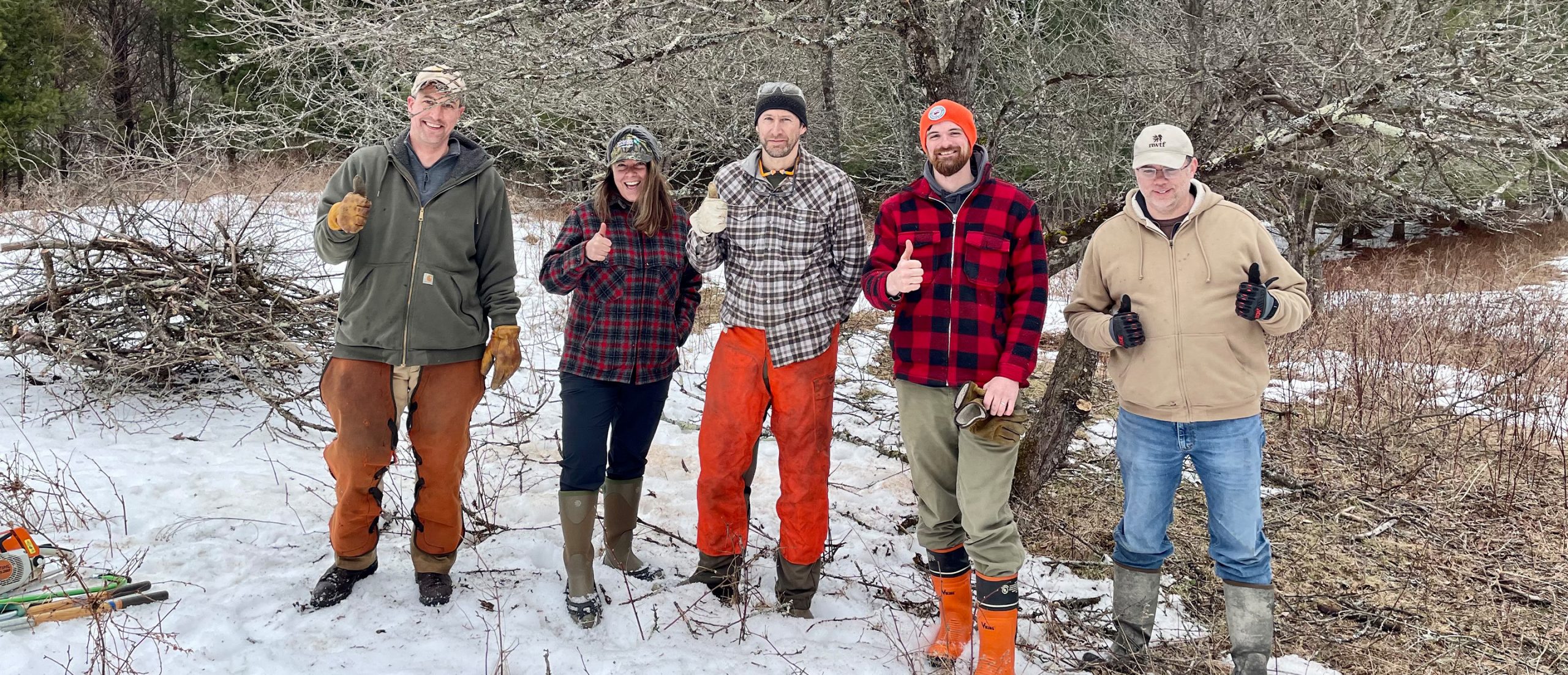Getting Excited by Giving Back
With the Vermont spring season just around the corner, a small group of volunteers got fired up about the incoming gobbles by giving back to the resource and improving wildlife habitat on public hunting lands.
Despite some cold, blustery weather and still a good bit of snow on the ground, volunteers from the NWTF, Backcountry Hunters and Anglers and the Vermont Fish and Wildlife Department gathered at the Elm Brook Wildlife Management Area in Fairfield, Vermont, to continue habitat improvements on some public land that the NWTF and VFWD have been enhancing through management.
“One of our main goals throughout Vermont is to provide wild turkeys and other species with a diversity of habitat and food resources,” said Matt DiBona, NWTF district biologist for New England. “This translates to keeping some areas as early successional habitat while keeping other areas forested. On the Elm Brook WMA, we recently partnered with VFWD to restore the fields that were reverting back to forest, and our work today is manicuring the mast-producing trees that we left in the fields because they serve a great value to wildlife.”
A promising sign to continue the habitat improvements was the flock of about 40 turkeys that were just adjacent to the work site as volunteers were arriving in the parking area.

After some quick introductions and turkey talk, volunteers grabbed their chainsaws and loppers and headed to the work sites. They worked on pruning the dozens of apples trees that pepper the openings throughout the WMA. They also chatted about how the area provides great hunting opportunities and the history of the WMA.

Similar to many public lands in Vermont, the Elm Brook WMA was cleared and used for agriculture before it was a WMA. However, in 1967, the state acquired the land with hunter-angler-generated funds. The 208-acre WMA is now mostly reforested with a mix of maple, yellow birch, beech, hemlock and white pine, and about 20% of the WMA is kept as open fields with apple trees. Having such a diversity of habitat benefits the multitude of wildlife that call the WMA home, including ruffed grouse, woodcock, deer and, of course, wild turkeys, as well as an array of nongame species. Additionally, there is an alder swamp and some vernal pools in the forest, which are important breeding habitat for amphibians.
And while the sun popped out here and there, the cold winds were picking up. However, the high-spirited work continued. Spencer Como, Vermont BHA volunteer and New England BHA Armed Forces Initiative Coordinator, was all smiles as he worked
“This project is important for BHA because we are always striving to work on conservation projects that can make an impact for the better,” Como said. “When you have a project like this apple pruning, it is a great opportunity to keep a good food source in the area for wildlife. This area provides so many opportunities to outdoor enthusiasts in Vermont, and we want to keep it as wildlife-positive as possible. Working with the NWTF is great because there are so many projects in the state that need the volunteers to put in the work to optimize the lands for wildlife and the public, and when we come together as partners, it provides us the power to make a significant impact.”
After a morning full of pruning apple trees and talking conservation, volunteers were able to look back the giant piles they amassed and take delight in their work for the common good, and it was on to the next project!
Learn how to become an NWTF volunteer and help make wildlife and hunting opportunities stronger in your area.
